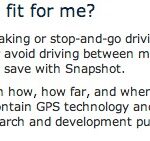Determining whether your 1995 Chevy 1500 is OBD1 or OBD2 can be surprisingly confusing, especially when you encounter an OBD2 port but experience OBD1-like diagnostic issues. Many owners of 1994 and 1995 General Motors vehicles, including the Chevy 1500 and GMC Sonoma, have faced this exact dilemma. Like one owner’s experience with their 1995 GMC Sonoma, you might find yourself with an OBD2 port that refuses to communicate with standard OBD2 scanners.
This owner recounted their frustrating experience trying to diagnose their 1995 GMC Sonoma. Despite the presence of an OBD2 port, multiple over-the-counter OBD2 scanners failed to establish a connection with the vehicle’s computer. These scanners would power on when plugged into the port, indicating a physical connection, but no data communication could be established. Even a Craftsman scanner with a display showing protocol attempts yielded the same unsuccessful result.
Seeking expert advice, the owner contacted the tech support for the Craftsman scanner. The support revealed a known issue: many 1994 and 1995 GM vehicles were manufactured with OBD1 computers despite being equipped with OBD2 diagnostic ports. This mismatch is not immediately obvious and can lead to significant confusion and diagnostic challenges.
A mechanic friend, equipped with a professional-grade SnapOn scanner, was able to successfully connect to the Sonoma and read diagnostic information. This suggests that advanced scanners, like those used in dealerships or professional repair shops, might be capable of automatically detecting and adjusting to the underlying OBD1 protocol even through an OBD2 port. Adding to the confusion, the vehicle’s emissions sticker lacked the OBD2 certification marking, further indicating a potential OBD1 system despite the port type. The owner’s initial assumption – that an OBD2 port automatically meant an OBD2 computer – proved incorrect, highlighting a common misconception among vehicle owners.
Faced with this diagnostic hurdle, the owner is considering a DIY approach. The plan involves acquiring both OBD2 and OBD1 cables, along with pinout diagrams, to create a custom adapter. This adapter would allow connection to an OBD1 compatible scanner, effectively bypassing the OBD2 port’s misleading interface. Alternatively, the search is on for a commercially available scanner specifically designed to handle this type of GM hybrid OBD system.
The experience raises questions about the broader implications of this hardware incompatibility. The owner pondered whether this situation warrants a class-action lawsuit, given that it potentially steers vehicle owners towards expensive dealership repairs. The inability to use standard OBD2 tools effectively forces owners to rely on specialized equipment, often found only at dealerships, for even basic diagnostics. This situation could be perceived as either a design flaw or a consequence of parts shortages during manufacturing, ultimately leading to diagnostic difficulties for consumers and independent repair shops alike.
For owners of a 1995 Chevy 1500 or similar GM vehicles from that era experiencing OBD2 scanner issues, the key takeaway is to investigate whether your vehicle might be one of these transitional models with an OBD1 system masked by an OBD2 port. Consulting with a knowledgeable mechanic or using a professional-grade scanner capable of handling both OBD1 and OBD2 protocols may be necessary for accurate diagnostics. Understanding this potential discrepancy can save considerable time and frustration in troubleshooting your vehicle’s engine and emissions systems.
